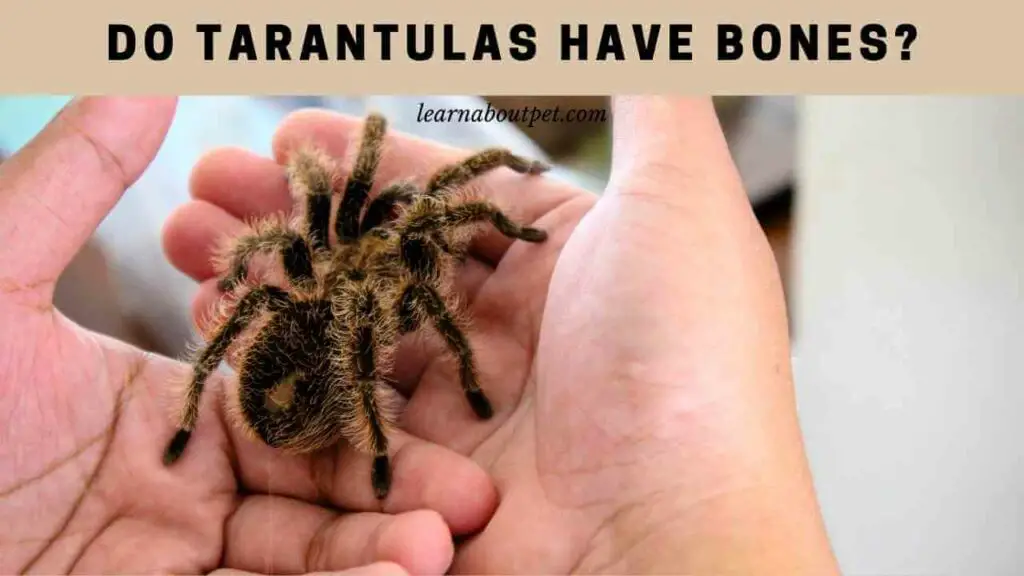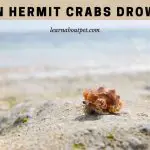One of the most frequently asked questions about tarantulas is as to whether they have bones. Sometimes, we get this question from people who are just curious about these creatures. At other times, we get this question from people who are considering keeping them as pets, and who want to get as much info about them as possible. In this article, you will find the answer to this and other related questions.
Do tarantulas have bones? The simple answer is ‘no’. Tarantulas, like other spiders, don’t have bones. What they have instead are external skeletons. These exoskeletons serve the purposes that would otherwise have been served by bones giving their bodies support and protection. Another fascinating fact about tarantulas is that they spin silk. But in contrast to other spiders, tarantula silk is not for making prey-catching webs.

The exoskeletons (exos) on tarantulas effectively function as shells, covering their entire bodies. The exos don’t grow at the same pace as the tarantula bodies. What this means is that they have to be shed off periodically, through a process called molting.
When tarantulas molt, they slowly walk out of their old exoskeletons, as new ones take their place. So that is basically what happens in the process of tarantula shedding exoskeleton.
Do Tarantulas Have Backbones?
Tarantulas don’t have backbones. In fact, they don’t have any bones at all. That’s why spiders do not feel anything. What they have (and which serves the bone functions) is an exoskeleton. Thus, for instance, while a back bone mainly serves the purpose of offering support, in a tarantula it is the exo that gives support.
Is a Tarantula A Vertebrate?
A vertebrate is an animal that has a backbone inside its body. Now as we have said, tarantulas don’t have backbones inside their body. As such, a tarantula is not a vertebrate. On the contrary, it is an invertebrate.
How Many Bones Does A Tarantula Have?
A tarantula doesn’t have any bones. The role that would otherwise have been served by bones is instead served by an external shell-like structure called an exoskeleton.
Do Tarantulas Have Bones?
Tarantulas are spiders. Like all other spiders, they lack bones. Thus, the simple answer to the does tarantulas have bones question is ‘no’. The person posing the do tarantulas have bones question may then ask how they manage to maintain structure and support for their bodies, in the absence of bones. And the answer is that the tarantula manages to do so through an exoskeleton.
Tarantula Exoskeleton
The tarantula exoskeleton covers its entire body externally. It offers protection to the tarantula’s body. It also offers support and helps to maintain the body structure. Thus when a person poses a question on whether a tarantula has bones or not, the simple answer is that it doesn’t. But it does have something else to serve the bone functions: namely the exoskeleton. The exo is like a shell that covers the entire body, externally.
The nature of the tarantula exoskeleton is however such that it doesn’t grow at the same pace as the tarantula’s body. This is what necessitates molting. In other words, this is why tarantulas molt. The reason is to get rid of the old exo they have outgrown, and get into a new exo that better suits their body size.
How Does A Tarantula Molt?
Often, after the do tarantulas have bones question comes another one: on how tarantulas molt. Thus the person who wants to know do tarantulas have bones comes to learn that they don’t – and what they have instead is an exo that they molt/shed from time to time. This then leads to the question on how a tarantula molts. In other words, this is a question on tarantula molting stages.
As it turns out, the molting process is quite a complex one. Of course, if you are just looking at a tarantula molting gif or a tarantula shedding gif, you may get the impression that it is a simple process. But it is not. You really need to look at an in-depth tarantula shedding video, to get an idea as to just how complex the entire process is.
It normally starts with the tarantula’s body creating another exoskeleton (from its skin’s cuticle layer). Then when time is right, it injects a fluid that separates the old exo from the new one. Thereafter, the tarantula slowly crawls out of its old exo. So in a nutshell that is how the tarantula molted skin is gotten rid of. And if you do encounter someone offering tarantula molt for sale, you need to understand that the molt is a result of this rather intricate process.

Why Tarantulas Molt?
This question on why tarantulas molt tends to come up frequently in forums dealing with the do tarantulas have bones topic. So, the person posing the do tarantulas have bones question is informed that they don’t. Further, he comes to learn that instead of bones, tarantulas have exoskeletons. And that those exos serve the purpose that would have been served by bones: and they molt it from time to time. This then leads to the question on why tarantulas molt.
The reason why tarantulas molt is because their exoskeleton doesn’t grow at the same pace as their bodies. Yet the exos should cover the body properly. Therefore as a tarantula grows, it needs to keep on generating a new exo that covers its (growing) body properly. And once it generates this new exo, it has to get rid of the old one. This it achieves through molting. So that is why tarantulas molt.
How Often Does A Tarantula Molt?
The frequency with which a tarantula molts most depends on its age. Younger tarantulas, which grow at a faster pace, molt more frequently than older ones. All in all, the molting frequency for tarantulas is about once per six months.
How Long Can A Tarantula Molt Take?
Sometimes, it is fairly fast: with the tarantula managing to walk out of its old exo in as few as 15 minutes. But there are times when it turns into a lengthy process: with the tarantula spending as much as a whole day before managing to walk out of its old exo.
So it can be anything from a quarter of an hour to a whole day. Sometimes problems arise in the course of the molting process, turning it into a difficult and possibly fatal affair.
Tarantula Molting Problems
There are many ways in which problems can crop up in the molting process. Sometimes, you find that the new exoskeleton is not fully formed. At other times, due to lack of adequate humidity, the tarantula is unable to dislodge the old exo.
There are also times when due to lack of energy, the tarantula is unable to move out of the old exo. So it gets stuck. Where a tarantula tries to move (or is moved) during the molting process, this too can cause problems.
Tarantula Molting Problems – How To Help?
The most important thing is to ensure that the humidity levels are adequate during the time when the tarantula molts. You also need to ensure that the tarantula gets adequate food and water throughout, so that it will have enough energy and hydration during molting time. And you need to avoid moving or disturbing your tarantula while it is molting.
Final Verdict – Do Tarantulas Have Bones
As we have seen, tarantulas don’t have bones. What they have instead is an external shell-like covering (called an exoskeleton) which serves the purpose that bones would have served. Bones provide support, structure and protection. The exo serves exactly the same purposes in tarantulas.

The tarantulas do molt/shed this exoskeleton from time to time. It is important to ensure that your tarantula has adequate humidity, as well as adequate nutrition and hydration to avoid problems during the molting process.
As a pet lover, make sure to learn about pet more and give your pet tarantula spider a better and comfortable life.

Welcome to Learn About Pet. My name is Rajkumar Ravichandran and I love all pets, travel, and amazing food. I write about my passion and personal experience caring for multiple pets in this blog! ❤️
Post Disclaimer
DISCLAIMER: THIS BLOG OR WEBSITE, "Learn About Pet", DOES NOT PROVIDE YOU WITH MEDICAL ADVICE AND IS NOT A SUBSTITUTE FOR MEDICAL ADVICE. ALWAYS GET IN TOUCH WITH YOUR PERSONAL VETERINARIAN AND USE INFORMATION HERE AS GENERAL ADVICE.
The information, including but not limited to, text, graphics, images and other material contained on this website are for informational purposes only. No material on this site is intended to be a substitute for professional veterinary advice, food recommendation, diagnosis, or treatment. Always seek the advice of your veterinarian or other qualified health care provider with any questions you may have regarding a medical condition or for pet food related questions.







